Lens: Super Takumar 105mm f2.4 – medium format lens for Pentax 67 6×7 camera with rear optical element made of radioactive thorium glass
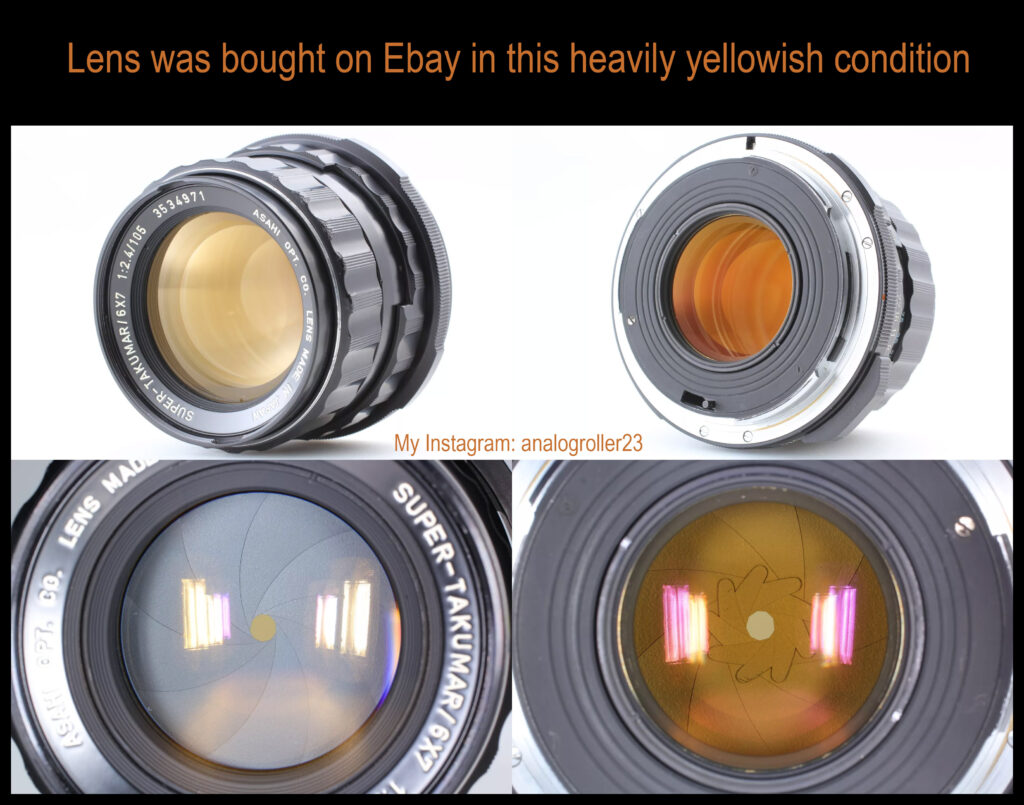
2 bulbs 6W UVB 10.0 were used for the procedure (Purchased on Ebay from China).
( UVA UVB Reptile Light Bulb Small Pet Heating Bulb for Turtle Lizard Snake )
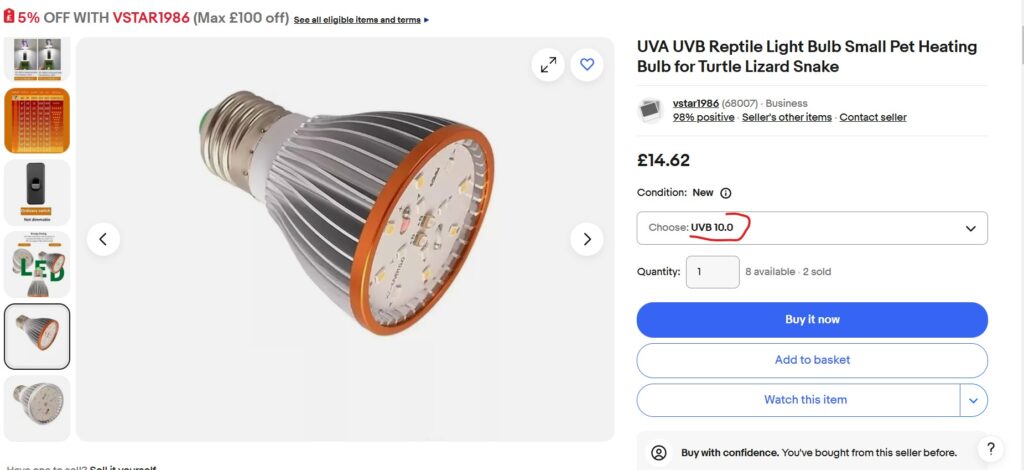

The bulb is at a distance of approximately 5cm from the optical front/rear element. No overheating problem did appear.
!!!Keep your eyes safe from light bulbs – at a sufficient distance and for a very short time!!!
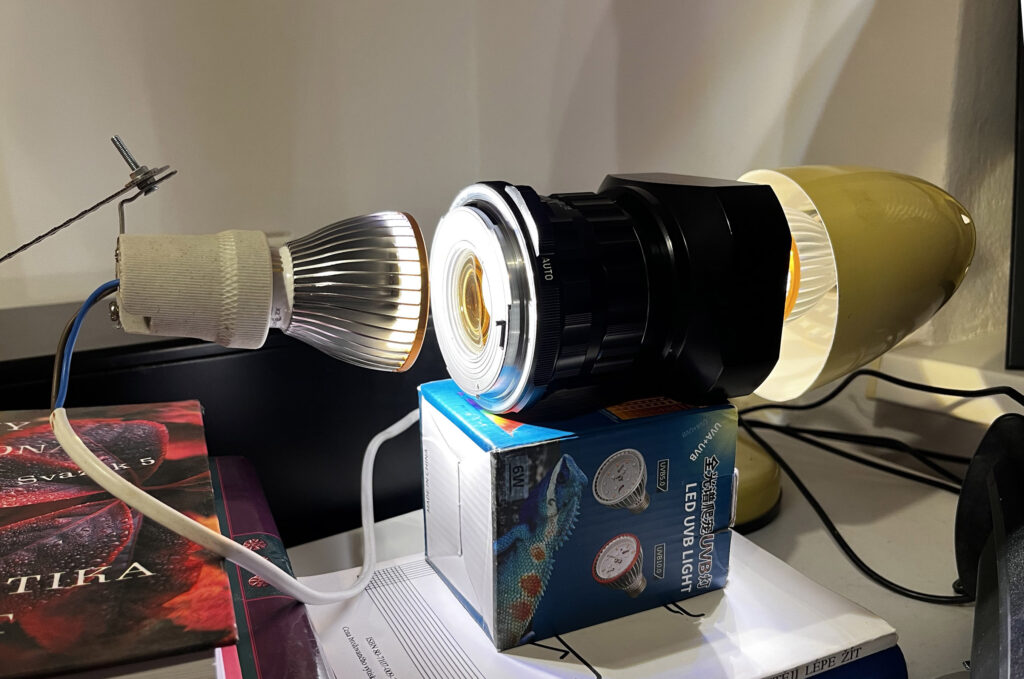
Measuring device for comparison before and after de-yellowing procedure:
Enlarger Magnifax adapted for scanning + camera Sony A7R III + Negative Supply Light Source PRO
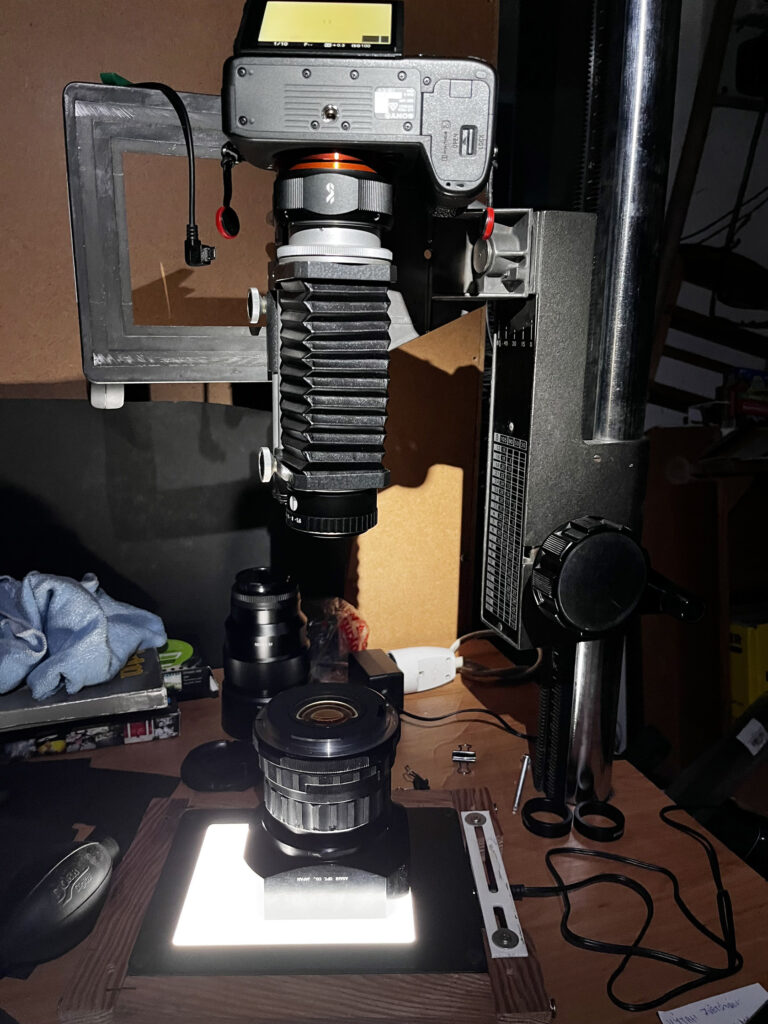
Camera and enlarger lens (Componon-S 5.6/100) settings were same for all (before/after) measuring and distances between the lightsource, Takumar lens and the camera had also the same values:
Exposure time: 1/10 s
Aperture: f8
ISO sensitivity: 100
White Ballance: 4700 K
Distance A: 38 (units read on the scale of the Magnifax enlarger)
Distance B: 13
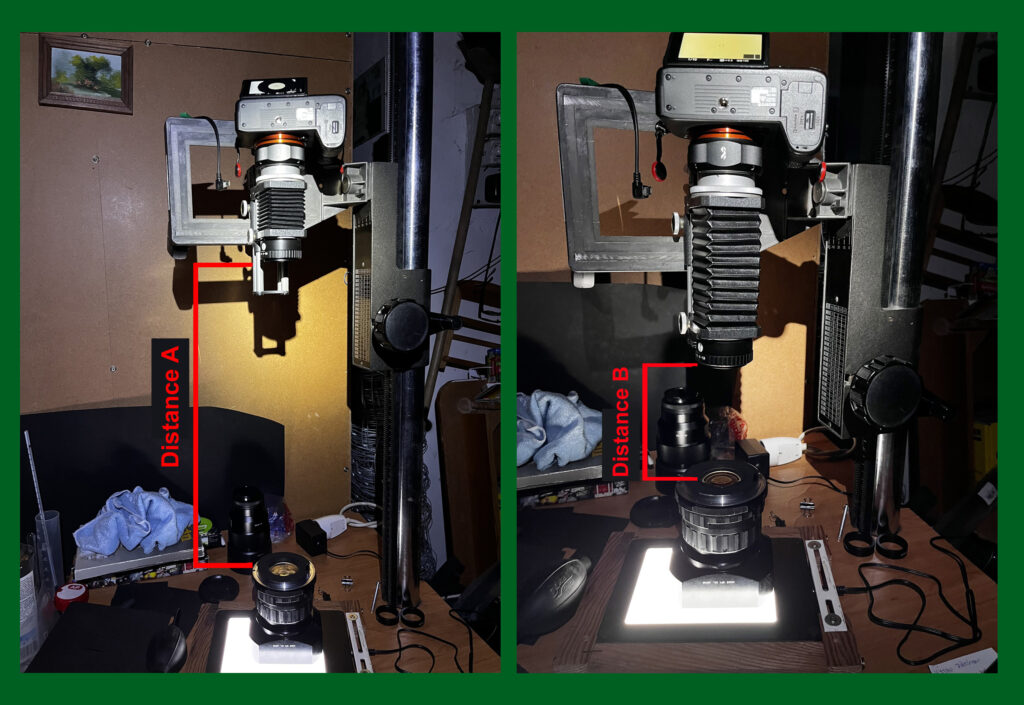
The biggest difference/de-yellowing effect was made in the first 12 hours. However, I left the light on for another 8 hours. In the pictures below you can see the difference after 20 hours of lighting with 2 bulbs.
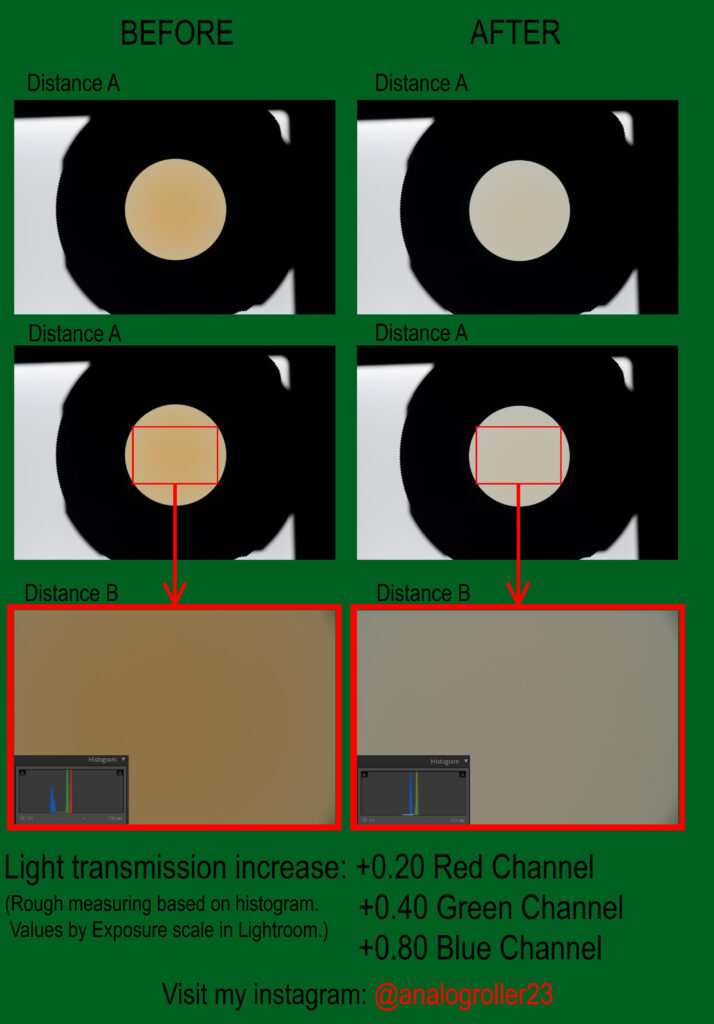
I left the light on for another 9 hours.
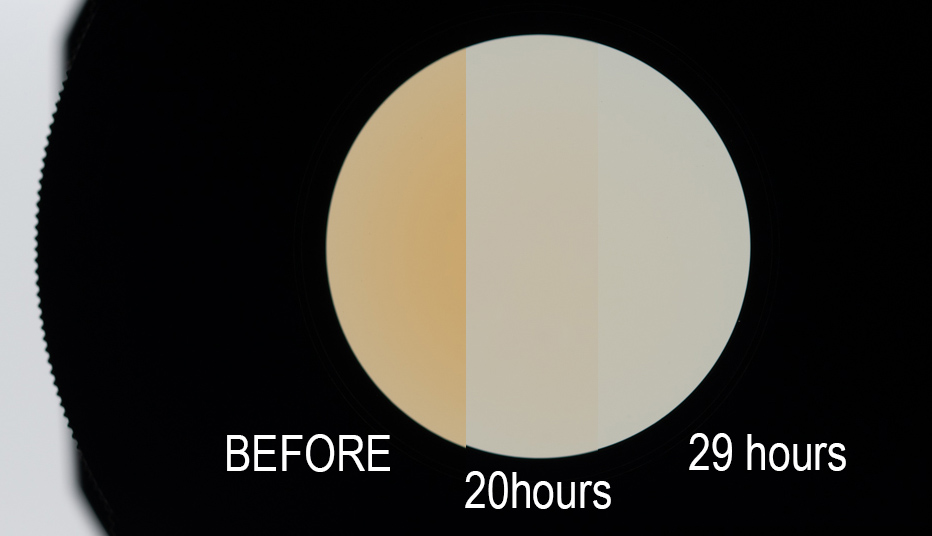
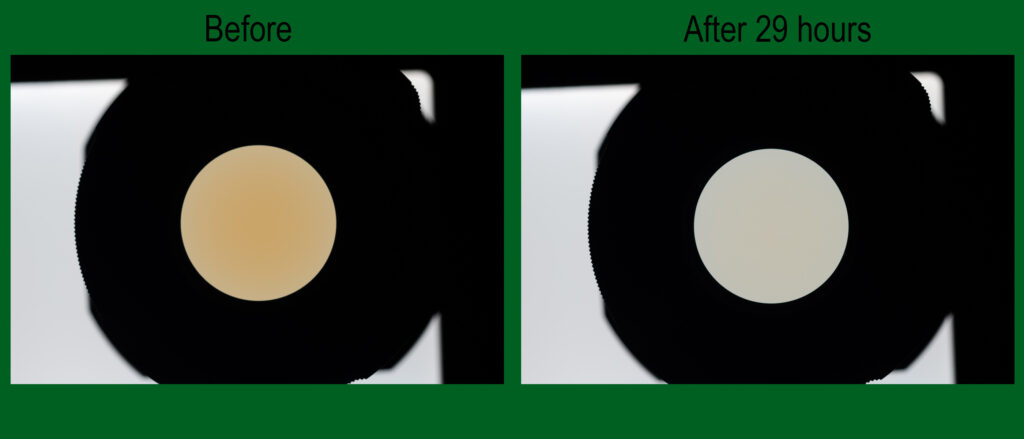
Rough values of light transmission increase before/after 29 hours:
RED: +0.25
GREEN: +0.45
BLUE: +0.95
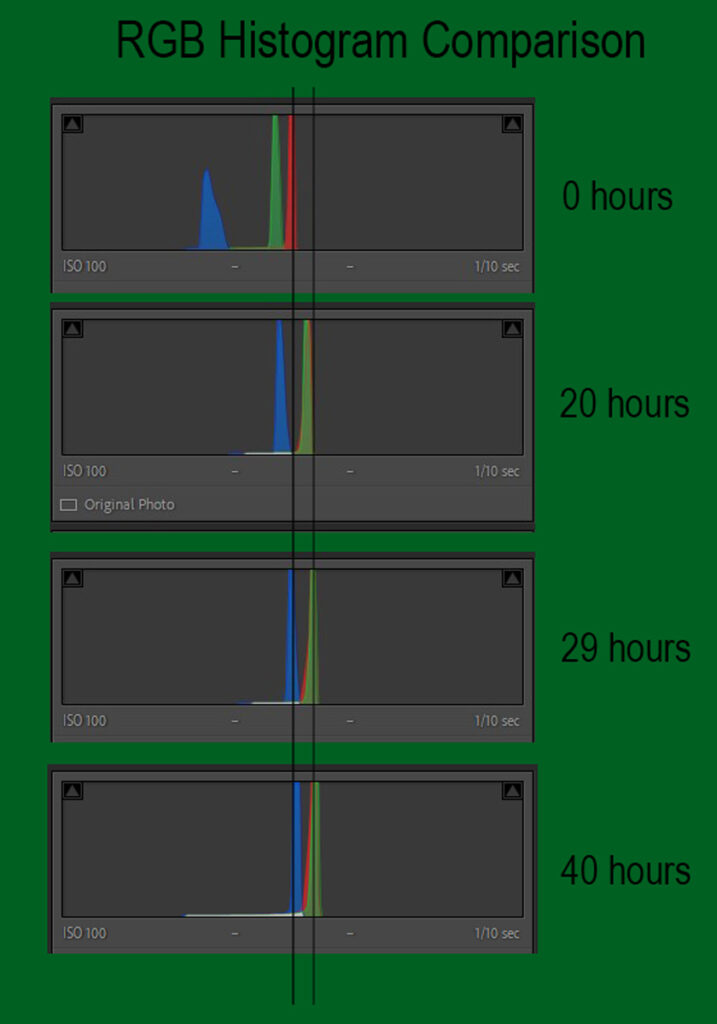
There may have been some variation in the measurements and the differences (20/29/40 hours) may be inaccurately, but most likely there are differences in the end.
40 hours
We can read from histograms some small increase of lens light transmission again (29 hours / 40 hours). Also blue channel comes closer to red and green but red and green are starting to move apart.
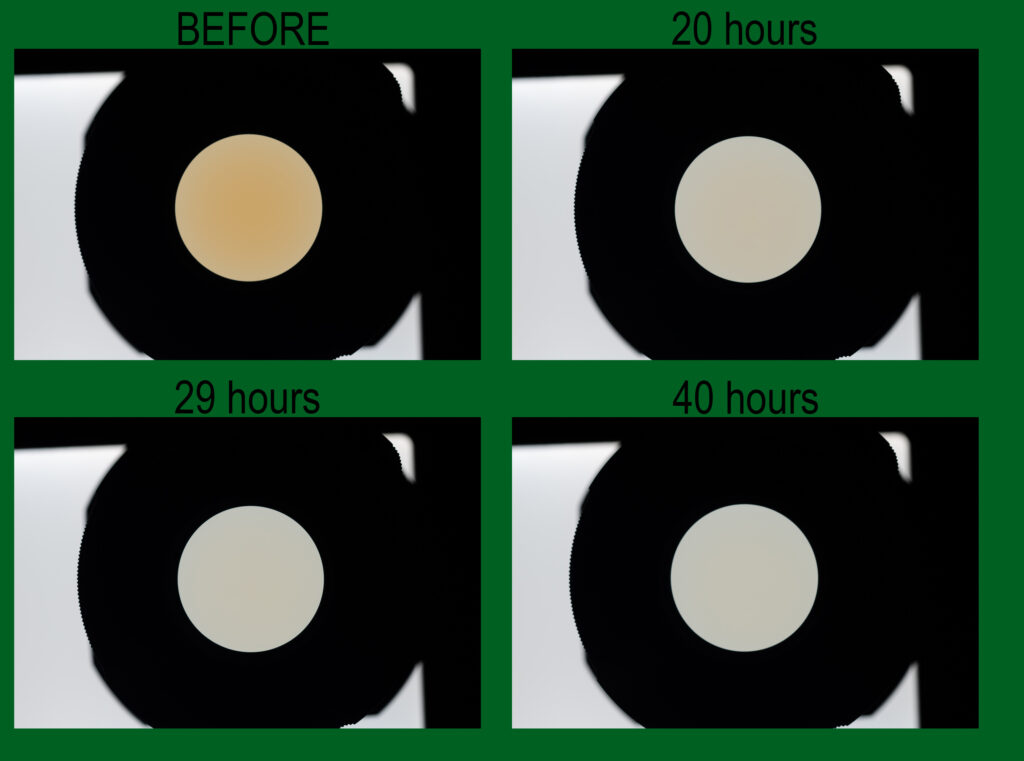

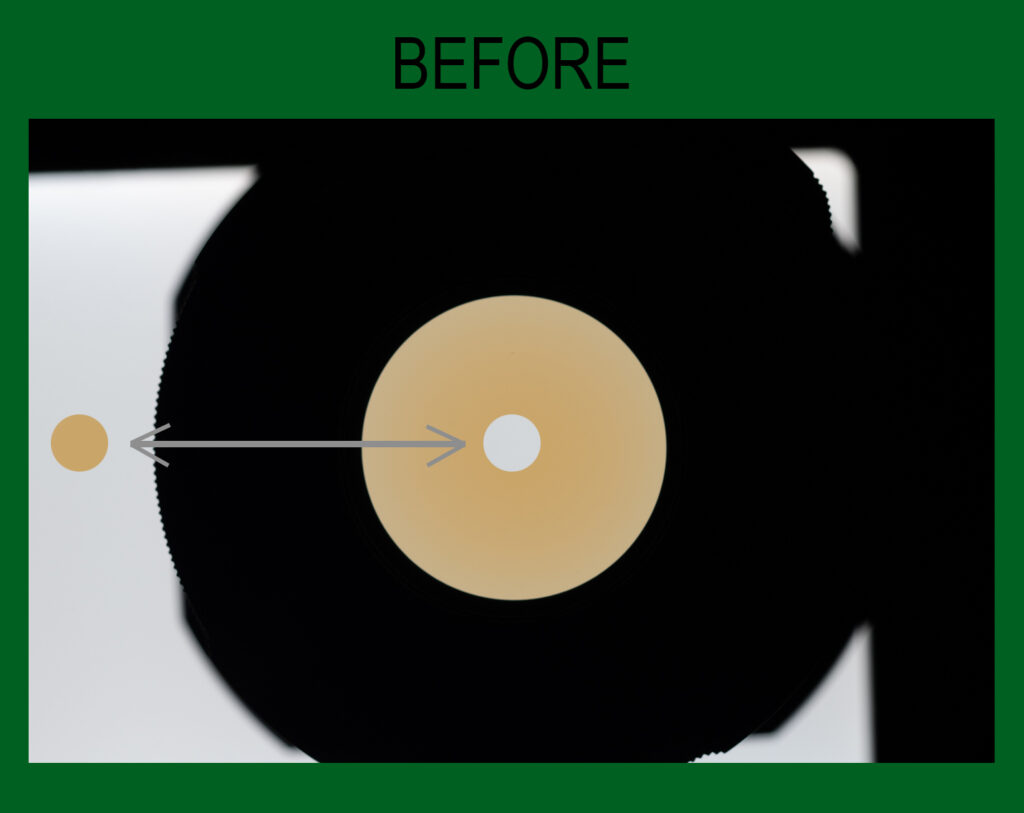
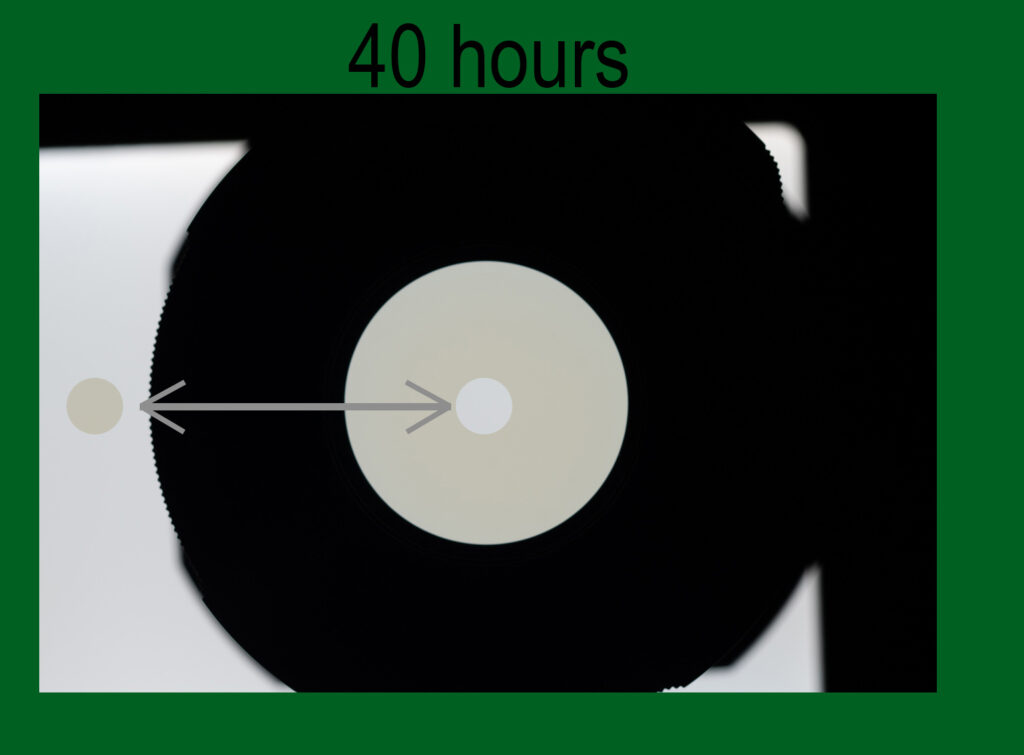
Super Takumar 105mm f2.4 vs. Nikon 16mm f2.8 AF-D Fisheye color cast comparison
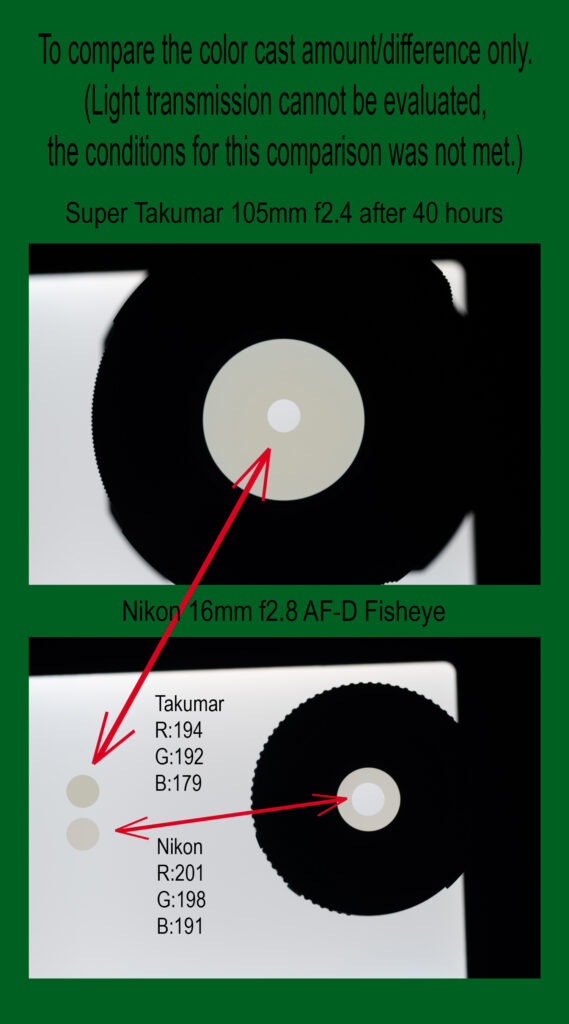
To compare with the first picture on the page.
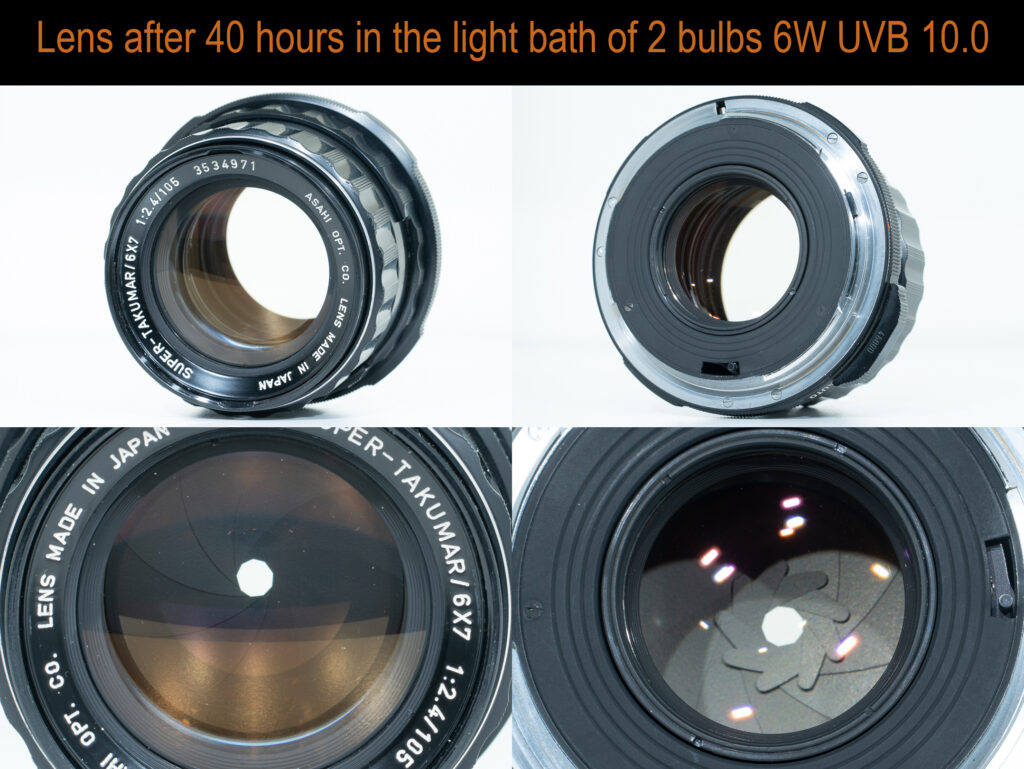
Photograph taken with the lens after deyellowing procedure, color negative film Kodak Portra 400.
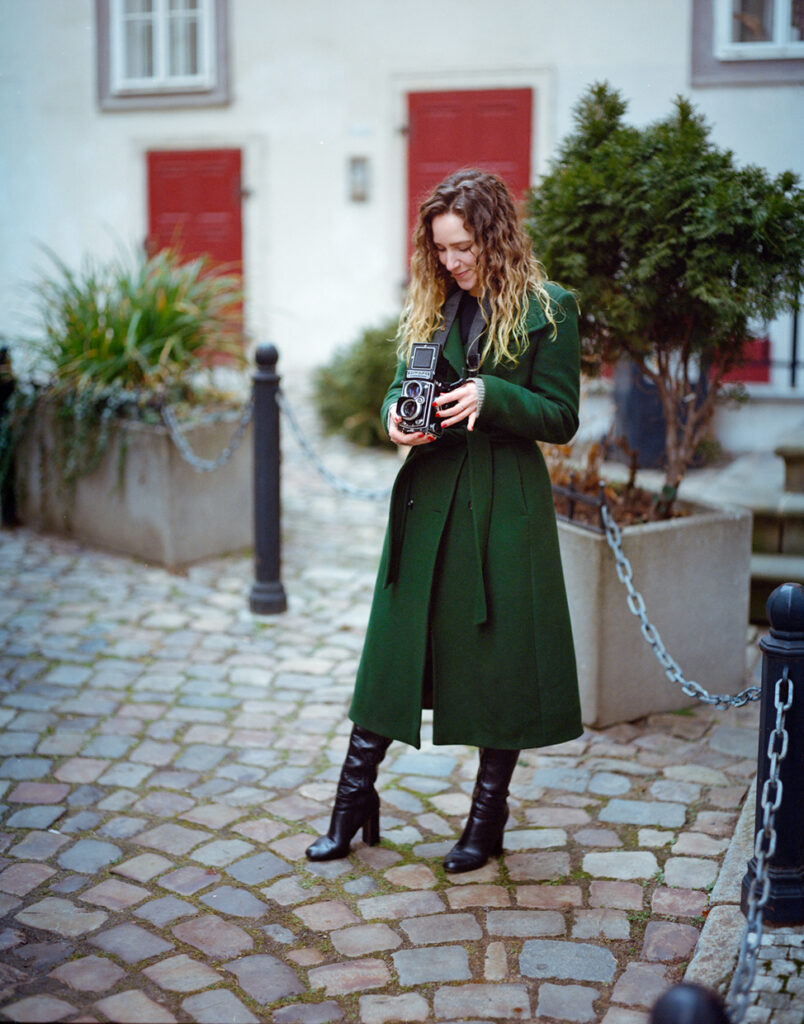
Draw your own conclusion and maybe you’ll prefer a permanent yellow filter for a black and white photo.
However, I prefer a lens that will affect colour rendition as little as possible, more light will pass through it and I can put the yellow filter on at any time – I want to have that choice.
*Click on pictures to enlrage and open in new panel.
Also you can check my analog pictures on https://www.analogova.fotoradost.cz/
2 Comments
Add Yours →Hi,
Thanks for the experiment.
Once you’ve performed the de-yellowing, will the lens turn yellow again after a while? Is it something that needs to be performed systematically to maintain no colour cast?
Hello Pieter, what I know the lens will turn yellow in about the same amount of time as if it were new (10 years and/or more).